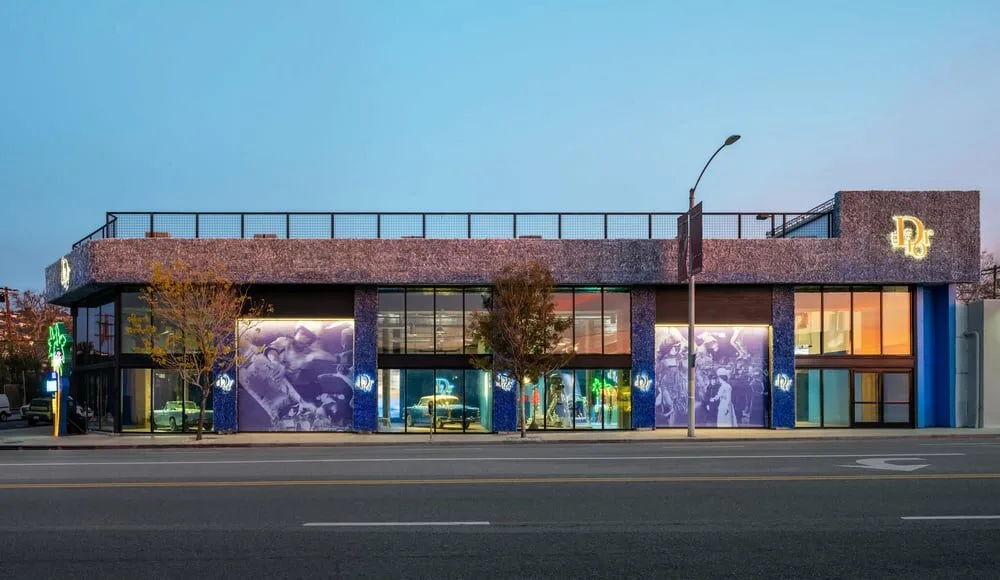Unlocking Success: Luxury Pop-Up Stores in the Fashion Industry
Luxury pop-up stores are revolutionizing the fashion industry, offering unmatched flexibility and cost-efficiency. They have swiftly become indispensable tools for luxury brands, driving revenue, enhancing brand image, and fostering innovation. These ephemeral boutiques are sprouting up globally, expanding the horizons of fashion labels, particularly in Asia and less commercially prominent regions, according to a study by Luxurynsight, a renowned luxury intelligence specialist.
Luxury Pop-Up Stores: A Game Changer
Luxurynsight conducted an exhaustive analysis of the retail endeavors undertaken in the first half of 2023 across 20 strategic locations by 15 of the most prestigious luxury brands, including Balenciaga, Bulgari, Cartier, Dior, Gucci, and Louis Vuitton. The objective was to gain deeper insights into the retail strategies adopted by the industry in response to the challenges posed by the pandemic.
Post-Pandemic Retail Trends
«Over the four years since the onset of the Covid-19 pandemic, the global luxury monobrand store count has seen only a marginal increase of 0.5%, particularly in regions like Asia-Pacific, Europe, and the Middle East,» noted Luca Solca, senior luxury analyst at consulting firm Bernstein. Solca underscored the trend of brands opening ever-larger stores, which has, interestingly, fueled the surge in pop-up stores. These temporary retail spaces provide an opportunity to infuse novelty into these sprawling flagship locations.
Strategic Role of Pop-Up Stores
Pop-up stores also serve as temporary placeholders and launchpads for permanent establishments, enabling brands to test new markets, unveil innovative projects, and embark on targeted marketing ventures in department stores and multi-brand retail chains. Luxurynsight’s research revealed that, post-pandemic, brands turned to opening such spaces, as well as physical stores in general, with the aim of attracting affluent domestic consumers in untapped markets, especially emerging and second-tier cities. This approach allowed brands to innovate both in terms of commerce and the overall customer experience.
Tailoring Ultra-Personalized Creative Experiences
«Retail innovation today hinges on essential elements such as immersive installations, seamless integration of digital and physical experiences, edutainment features, highly personalized products and services, and a heightened awareness of environmental sustainability. Brands must internalize the values of their customers and create connected, tech-driven ecosystems that unify a diverse commercial landscape spanning multiple formats and platforms into a singular, unforgettable experience,» emphasized Luxurynsight in its study.
Meeting Customer Expectations
In our interconnected world, customers seek engaging shopping journeys that offer more than mere purchases – they crave ultra-personalized creative experiences aligned with their values. According to Luxurynsight, 49% of luxury consumers believe that brands should provide experiences beyond shopping. Looking ahead to 2030, a staggering 80% of customers expect to encounter uniquely tailored in-store experiences.
Pop-Up Stores: The Ultimate Canvas for Creativity
In this context, the pop-up store has emerged as the ideal format for experimenting with a wide array of experiences. From captivating, multi-sensory spaces adorned with distinctive furnishings to showcasing exclusive products and initiatives such as limited-edition capsule collections or personalized services, pop-up stores offer a cost-effective means to establish a presence in upscale locations for a limited duration.
Creative Freedom
When brands venture into the world of temporary stores, they unleash their creativity, exploring possibilities that know no bounds. Take, for instance, Dior’s grand takeover of 8175 Melrose Avenue in Los Angeles in January, featuring not only a retail space but also a restaurant. This space served as the backdrop for the unveiling of the California Couture collection, a collaboration with ERL. With its size and originality, Dior’s pop-up space drew crowds and captured public attention.
Global Reach of Pop-Up Stores
Similarly, many other luxury brands capitalized on the summer season to infuse beaches and seaside resorts with their distinctive colors and vibes. Pop-up stores also offer the opportunity to transform into brand museums, as exemplified by Cartier. Between May and June, the luxury watches and jewelry brand launched the ‘Culture of Design’ pop-up space in Sydney, Australia, showcasing a selection of its historical pieces. Another renowned jewelry brand, Bulgari, dedicated an opulent temporary space to its iconic Serpenti collection in Beverly Hills in April.
A Global Phenomenon
The majority of pop-up stores that emerged in the first half of 2023 were located in Asia, particularly in China, and to a lesser extent, Japan. The United States followed closely in terms of numbers, with France, the UK, the UAE, Italy, Germany, and Mexico also featuring in the mix. In China, Shanghai, Chengdu, and Shenzhen were the primary locations, followed by Beijing and several second-tier cities. In Japan, Tokyo led the way, outshining Osaka, Nagoya, and Fukuoka.
Asia-Pacific Pioneers
Beyond Asia, other Asia-Pacific destinations proved immensely popular, including Sydney and Brisbane in Australia, Phuket in Thailand, Jakarta in Indonesia, Singapore, and Kota Tinggi and Kuala Lumpur in Malaysia.
Conclusion
Luxurynsight’s research demonstrates that luxury brands are turning to pop-up stores as a versatile canvas for their creative and business endeavors. These ephemeral boutiques offer a cost-effective means to explore novel markets, foster innovation, and deliver unforgettable experiences to an increasingly discerning and values-driven customer base. In an era defined by connectivity and personalization, pop-up stores are the vanguard of luxury’s retail evolution.
